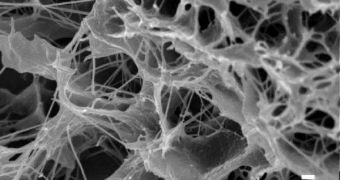Massachusetts Institute of Technology (MIT) researchers managed to create an advanced tissue scaffold design, one that is to be used for direct heart tissue transplantations in patients suffering from congenital heart defects or other similar afflictions. Organic tissue can be grown from natural heart cells through this process. The entire scaffold is biodegradable, so, once it fades inside the host body, all that remains will be the newly-grown, healthy tissue.
The scaffold designed at MIT matches the exact mechanical and physical properties of an actual beating heart, so it will not conflict with existing tissue, nor will it damage it in any way. The cell support is shaped like a honeycomb, for better control of the cells growing inside, and is made up of a very sophisticated polymer, which allows it to stretch and compress much like the actual heart muscle.
Lead author of the study, George C. Engelmayr Jr., said that "previous scaffolds did not necessarily possess structural or mechanical properties consistent with the native myocardial structure," referring to the new scaffold's "native" ability of pinpointing the location where new cells are needed most. "The scaffold itself has an intrinsic ability to guide the orientation of cultured heart cells," corresponding author, Lisa E. Freed, said.
The science team used a laser device, much similar to that used for eye surgery, to cut out the exact model for the scaffold. Then, they discovered that they could imprint the new design with the exact mechanical properties they needed from it, which can and will open up new ways for researchers to look at regenerative medicine.
If the new technique proves useful and registers success in further experiments, it's possible for the concept to be extended to medical aids for other organs as well. It basically offers a base of operations for cell growth. It stands to reasons that all types of cells can be placed inside the scaffold, which could help patients suffering from other congenital defects as well.

 14 DAY TRIAL //
14 DAY TRIAL //